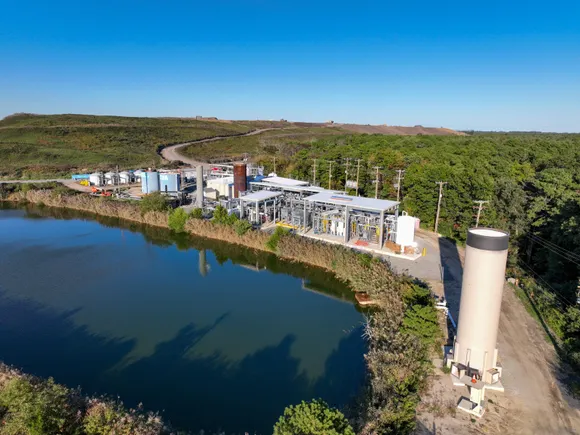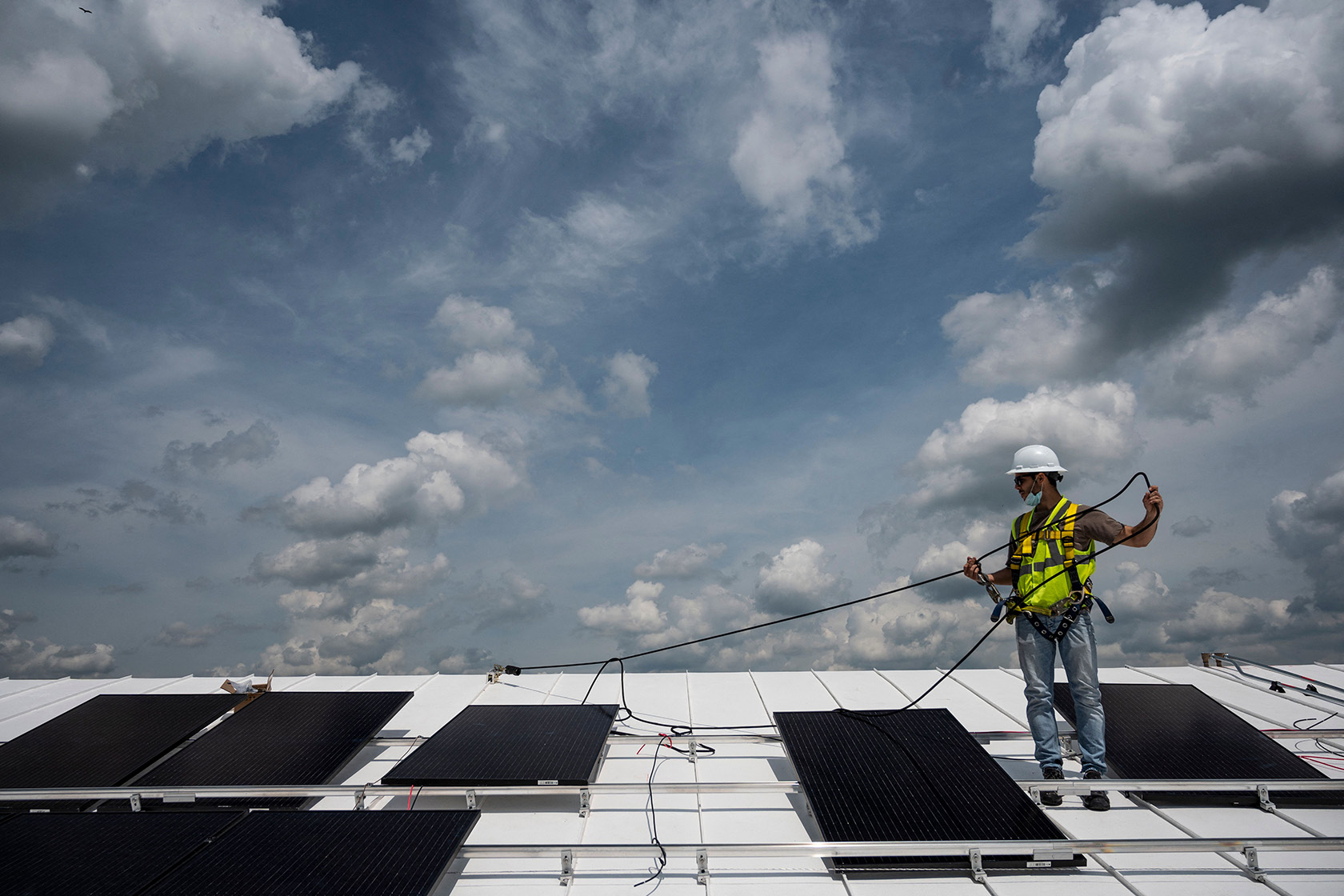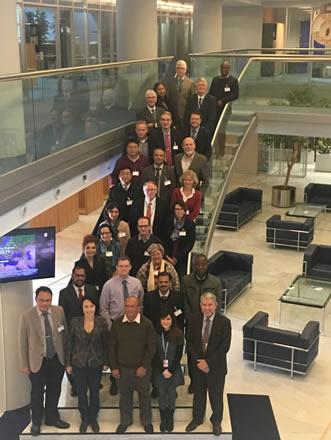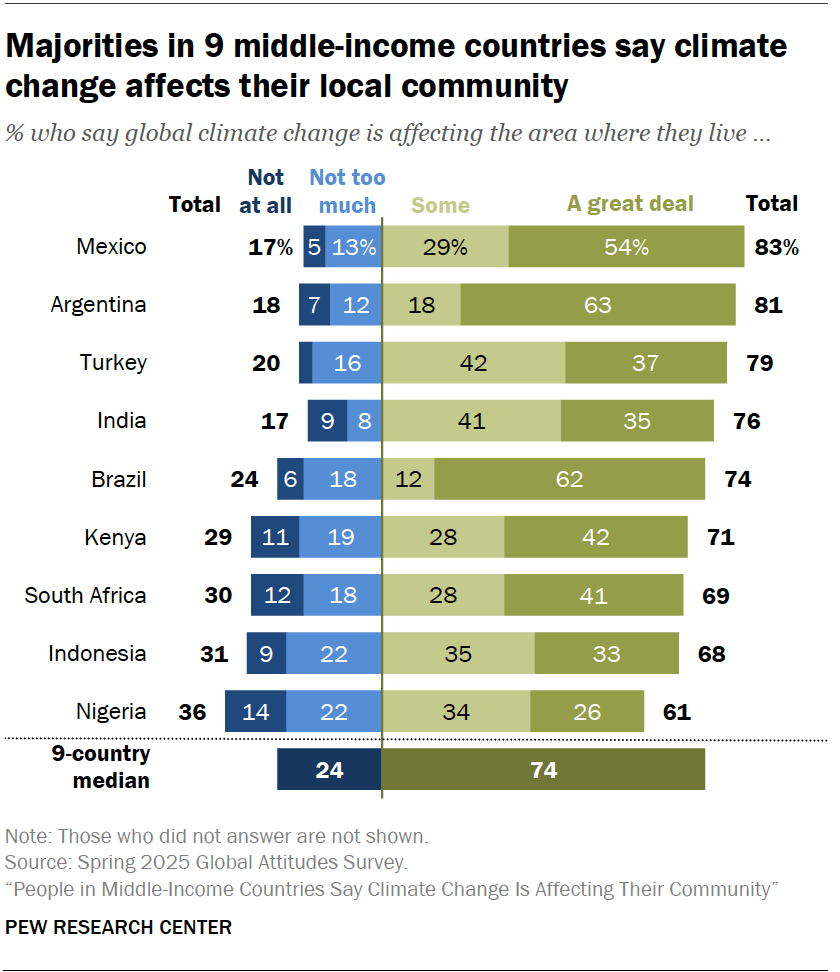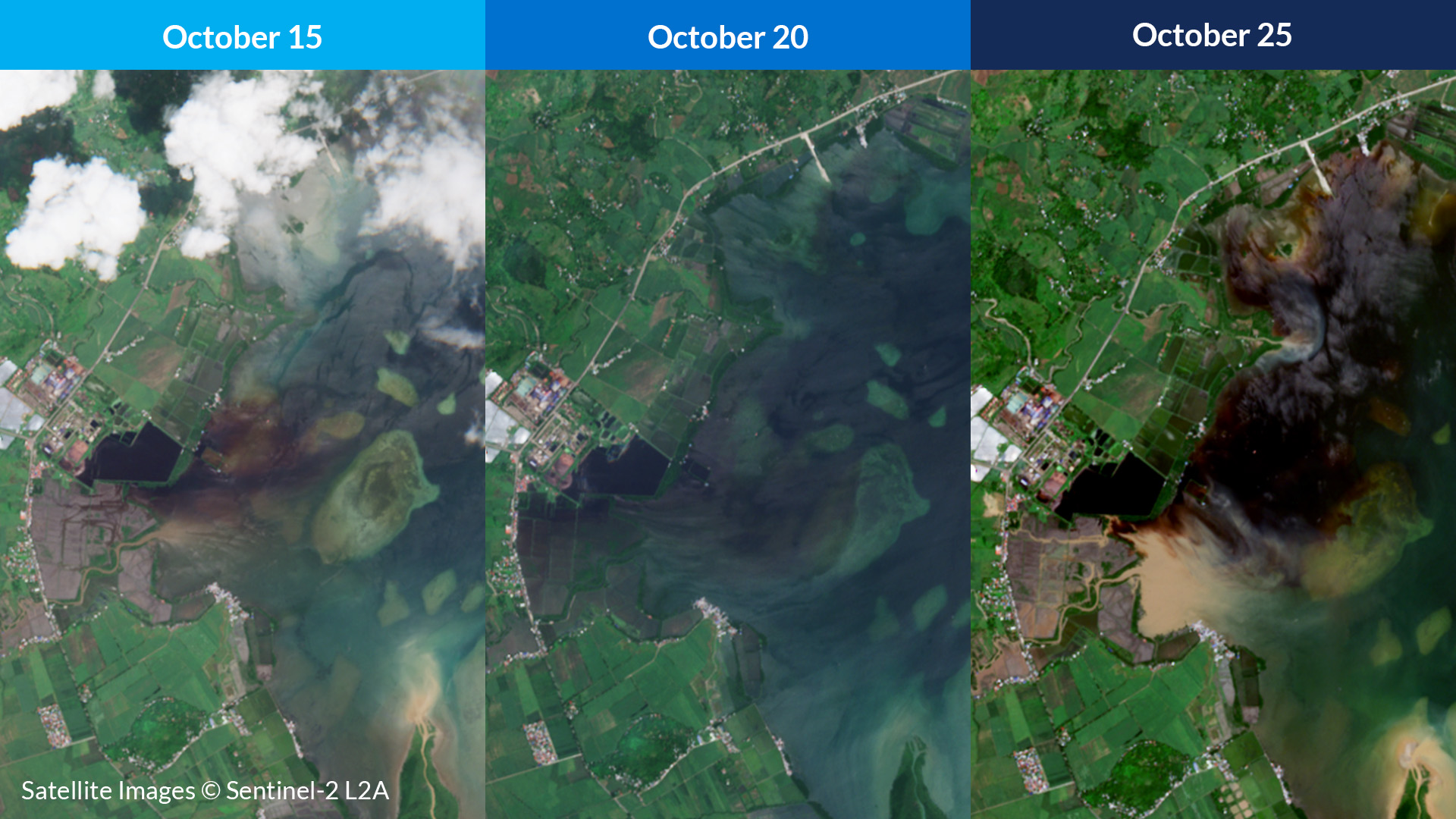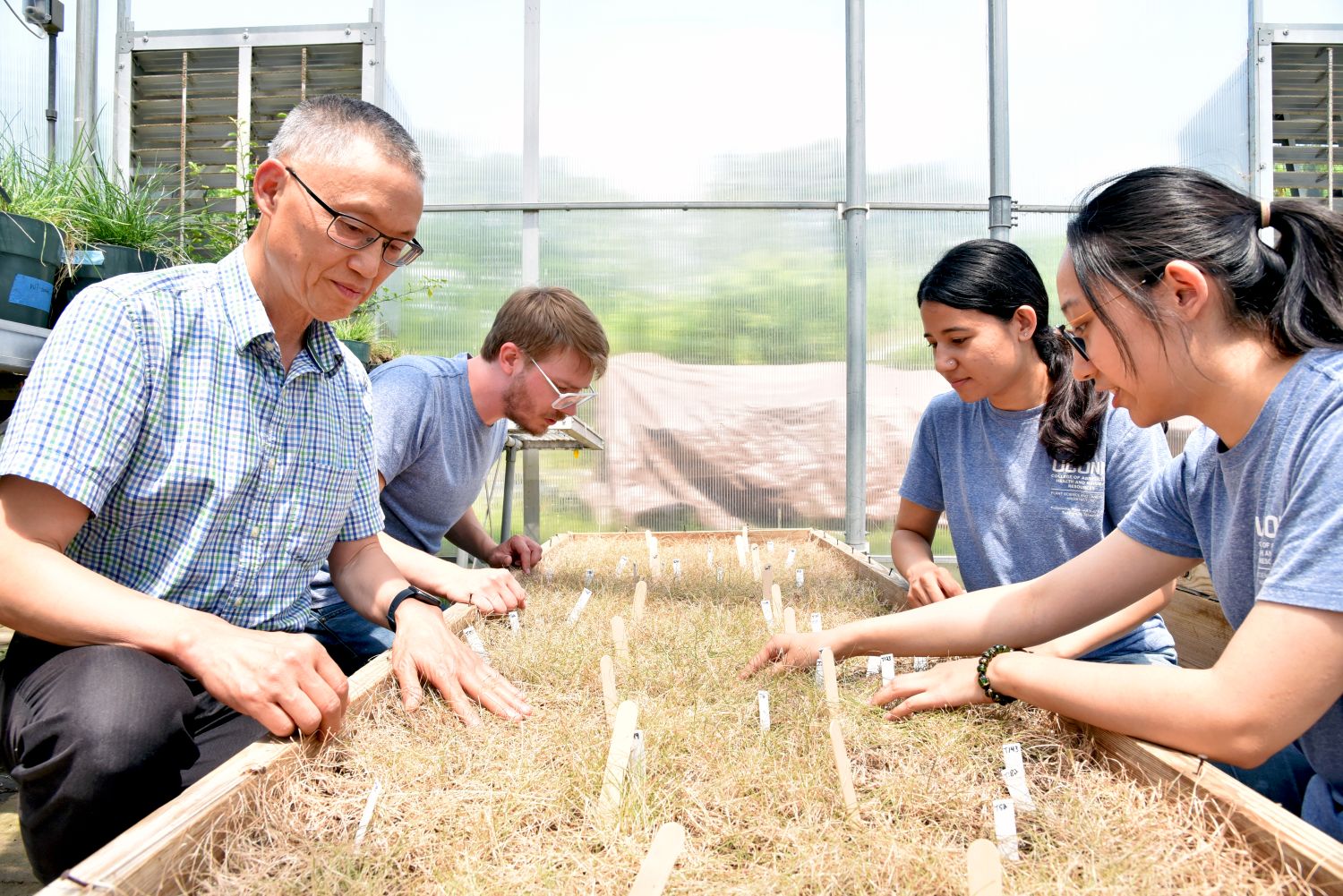Savannah Airport expansion to fuel economic growth in region, including Statesboro – Grice Connect
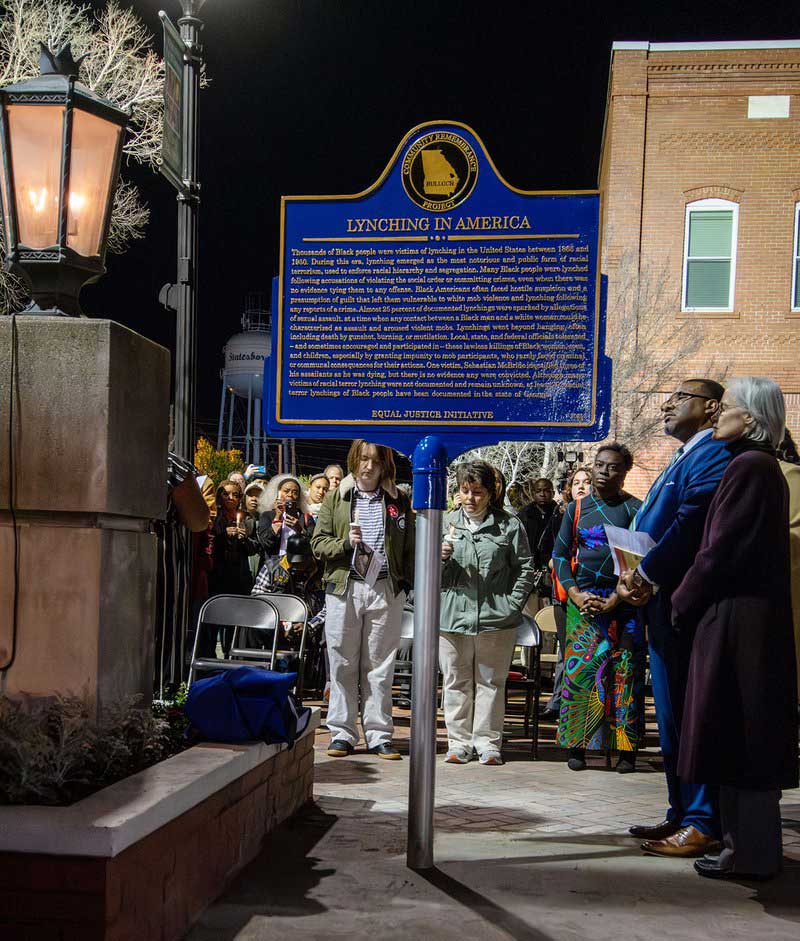
Savannah/Hilton Head International Airport Expansion: A Catalyst for Regional Sustainable Development
Executive Summary
The Savannah Airport Commission is undertaking a $400 million expansion of the Savannah/Hilton Head International Airport (SAV). This initiative is designed to enhance commercial, cargo, and general aviation capabilities in response to significant regional growth. The project is strategically aligned with several United Nations Sustainable Development Goals (SDGs), primarily focusing on fostering economic growth, building resilient infrastructure, and promoting sustainable communities through robust partnerships.
SDG 8: Decent Work and Economic Growth
The expansion project is a significant driver of regional economic activity and job creation, directly contributing to SDG 8. The investment aims to stimulate sustainable economic growth and ensure productive employment for communities within the airport’s 28-county service area, including Bulloch County.
- Job Creation: The expansion supports approximately 10,000 existing jobs with Gulfstream Aerospace and encourages further employment growth with companies like Rolls-Royce and other aeronautical businesses.
- Economic Diversification: A primary focus is on developing air cargo infrastructure to capture freight demand linked to major regional industries, such as the Hyundai Metaplant, diversifying the local economy beyond passenger and leisure travel.
- Revenue Generation: The airport generates substantial revenue, with parking fees alone exceeding $16 million annually, contributing to a self-sustaining economic model.
- Tourism and Leisure: With over 60% of its 2 million annual passengers being leisure travelers, the airport is a critical engine for the regional tourism economy.
SDG 9: Industry, Innovation, and Infrastructure
The capital plan is centered on building resilient, sustainable, and innovative infrastructure to support long-term regional development, in direct alignment with SDG 9.
- Terminal and Gate Expansion: A four-gate terminal expansion is underway to increase passenger capacity and improve service efficiency.
- Cargo Infrastructure: New cargo facilities are under construction to establish the airport as a key logistics hub for Southeast Georgia.
- Transportation and Access: The project includes the addition of 1,000 surface parking spaces and the design of a new 2,000-space parking deck. Furthermore, a major upgrade to the airport’s I-95 interchange is being coordinated with the Georgia Department of Transportation (GDOT).
- Aviation Infrastructure: Long-term plans include the reconstruction of the primary runway, expansion of fuel storage capacity, and the construction of a new general aviation campus and corporate hangars.
- International Capabilities: A new $15 million federal inspection station will enable the airport to handle international charter flights, opening new markets and fostering global connections.
SDG 11: Sustainable Cities and Communities
The expansion enhances regional connectivity, making transportation systems more inclusive and accessible for surrounding communities, thereby supporting the objectives of SDG 11.
- Enhanced Regional Access: The airport serves over 30 nonstop destinations via 11 major airlines, including new low-cost options from Spirit, Southwest, and Breeze Airways, improving affordable access for residents of Statesboro, Bulloch County, and the wider region.
- Sustainable Land Use: The project includes the repurposing of land from the airport’s former terminal area for new development, demonstrating responsible urban planning.
- Inclusive Planning: The Savannah Airport Commission is updating its master plan with a call for public input from across its service area, ensuring that community voices are integrated into future development.
SDG 17: Partnerships for the Goals
Collaboration is a cornerstone of the expansion strategy, reflecting a strong commitment to SDG 17 by building multi-stakeholder partnerships to achieve sustainable development.
- Inter-Airport Collaboration: A strategic partnership exists between Savannah/Hilton Head International Airport and the Statesboro-Bulloch County Airport. The latter provides essential support for general aviation, flight training, and overflow capacity, functioning as a complementary asset within a regional aviation system.
- Public-Private Partnerships: The project involves deep collaboration with major corporations like Gulfstream, Rolls-Royce, and Hyundai to align infrastructure development with industrial and economic needs.
- Academic and Community Engagement: The airport is strengthening its relationship with Georgia Southern University and local partners through sponsorships and direct outreach, fostering a connection between education, innovation, and regional growth.
- Governmental Advocacy: The Savannah Airport Commission is actively advocating for improved state funding models in partnership with regional leaders to ensure that state investment reflects the airport’s significant economic impact.
SDGs Addressed in the Article
- SDG 8: Decent Work and Economic Growth
- SDG 9: Industry, Innovation and Infrastructure
- SDG 11: Sustainable Cities and Communities
- SDG 17: Partnerships for the Goals
Specific SDG Targets Identified
-
SDG 8: Decent Work and Economic Growth
-
Target 8.2: Achieve higher levels of economic productivity through diversification, technological upgrading and innovation.
The article highlights the airport’s expansion into air cargo to “capture freight currently being routed through other cities,” which represents economic diversification. The growth is tied to high-tech manufacturing and logistics, such as “Hyundai’s Metaplant” and the expansion of aeronautical businesses like Gulfstream and Rolls-Royce, indicating a focus on technologically advanced sectors to boost regional productivity.
-
Target 8.5: Achieve full and productive employment and decent work.
The expansion is directly linked to job creation. The article explicitly states that “Gulfstream Aerospace, already employing 10,000 people on airport property, is also expanding.” The overall project is aimed at matching “explosive regional growth,” which implies the creation of further employment opportunities in commercial, cargo, and general aviation sectors.
-
Target 8.2: Achieve higher levels of economic productivity through diversification, technological upgrading and innovation.
-
SDG 9: Industry, Innovation and Infrastructure
-
Target 9.1: Develop quality, reliable, sustainable and resilient infrastructure, including regional and transborder infrastructure, to support economic development and human well-being.
The core of the article is the “$400 million expansion” of the Savannah/Hilton Head International Airport. This includes a “four-gate terminal expansion,” “reconstruction of the airport’s primary runway,” new parking facilities, and a “major upgrade to the airport interchange on I-95.” This infrastructure development is explicitly designed to support economic development across a “28-county catchment area” and improve regional access.
-
Target 9.1: Develop quality, reliable, sustainable and resilient infrastructure, including regional and transborder infrastructure, to support economic development and human well-being.
-
SDG 11: Sustainable Cities and Communities
-
Target 11.2: Provide access to safe, affordable, accessible and sustainable transport systems for all.
The airport expansion aims to improve transportation access for the region’s population. The article notes that new airlines like Spirit, Southwest, and Breeze have “significantly improving low-cost access to key hubs.” Furthermore, the development of a “$15 million federal inspection station” to handle international flights and upgrades to the I-95 interchange enhance the accessibility and capacity of the regional transport system.
-
Target 11.a: Support positive economic, social and environmental links between urban, peri-urban and rural areas by strengthening national and regional development planning.
The article details a strategic partnership between the Savannah airport (urban hub) and the Statesboro-Bulloch County Airport (serving a more rural area). This collaboration is described as a way to “support the whole region function.” The Savannah Airport Commission is also “updating its master plan and seeking public input from across its 28-county service area,” which demonstrates a commitment to integrated regional development planning.
-
Target 11.2: Provide access to safe, affordable, accessible and sustainable transport systems for all.
-
SDG 17: Partnerships for the Goals
-
Target 17.17: Encourage and promote effective public, public-private and civil society partnerships.
The article is built around the theme of partnership. It highlights the collaboration between the Savannah Airport Commission and the Statesboro Bulloch County Airport Authority, with leaders stating, “‘We’re not competitors — we’re partners.’” It also mentions partnerships with “Georgia Southern University and local partners” and calls for regional leaders to form an advocacy partnership to secure better state funding, demonstrating a multi-stakeholder approach to achieving regional goals.
-
Target 17.17: Encourage and promote effective public, public-private and civil society partnerships.
Indicators for Measuring Progress
-
SDG 8 Indicators (Decent Work and Economic Growth)
- Total investment in infrastructure: The article states a “$400 million expansion” is underway.
- Number of jobs created/sustained: The article mentions “10,000 people” employed by Gulfstream alone, with further expansion planned.
- Annual revenue generation: The airport generates “close to $20 million in net annual revenue,” with parking revenue alone topping “$16 million annually.”
-
SDG 9 Indicators (Industry, Innovation and Infrastructure)
- Passenger volume: The airport served “over 2 million passengers last year.”
- Infrastructure capacity increase: Specific projects include a “four-gate terminal expansion,” the addition of “1000 surface parking spaces” with a “new 2000 space parking deck” under design, and new cargo buildings.
- Air service connectivity: The airport serves “over 30 nonstop destinations” and hosts “11 major airlines.”
-
SDG 11 Indicators (Sustainable Cities and Communities)
- Scope of regional planning: The airport’s master plan update seeks input from its entire “28-county service area.”
- Accessibility of transport: The introduction of low-cost carriers (Spirit, Southwest, Breeze) is an indicator of improved affordable access.
- Inter-modal connectivity projects: A “major upgrade to the airport interchange on I-95” is a specific project indicator.
-
SDG 17 Indicators (Partnerships for the Goals)
- Existence of formal partnerships: The article describes the active collaboration between the Savannah Airport Commission and the Statesboro Bulloch County Airport Authority.
- Multi-stakeholder engagement: The airport is engaging in “campus partnerships, sponsorships,” and direct outreach with entities like Georgia Southern University.
- Joint advocacy efforts: There is a call for regional leaders to partner with the airport to “advocate for better funding models.”
Summary of SDGs, Targets, and Indicators
| SDGs | Targets | Indicators |
|---|---|---|
| SDG 8: Decent Work and Economic Growth |
|
|
| SDG 9: Industry, Innovation and Infrastructure |
|
|
| SDG 11: Sustainable Cities and Communities |
|
|
| SDG 17: Partnerships for the Goals |
|
|
Source: griceconnect.com

What is Your Reaction?
 Like
0
Like
0
 Dislike
0
Dislike
0
 Love
0
Love
0
 Funny
0
Funny
0
 Angry
0
Angry
0
 Sad
0
Sad
0
 Wow
0
Wow
0
























